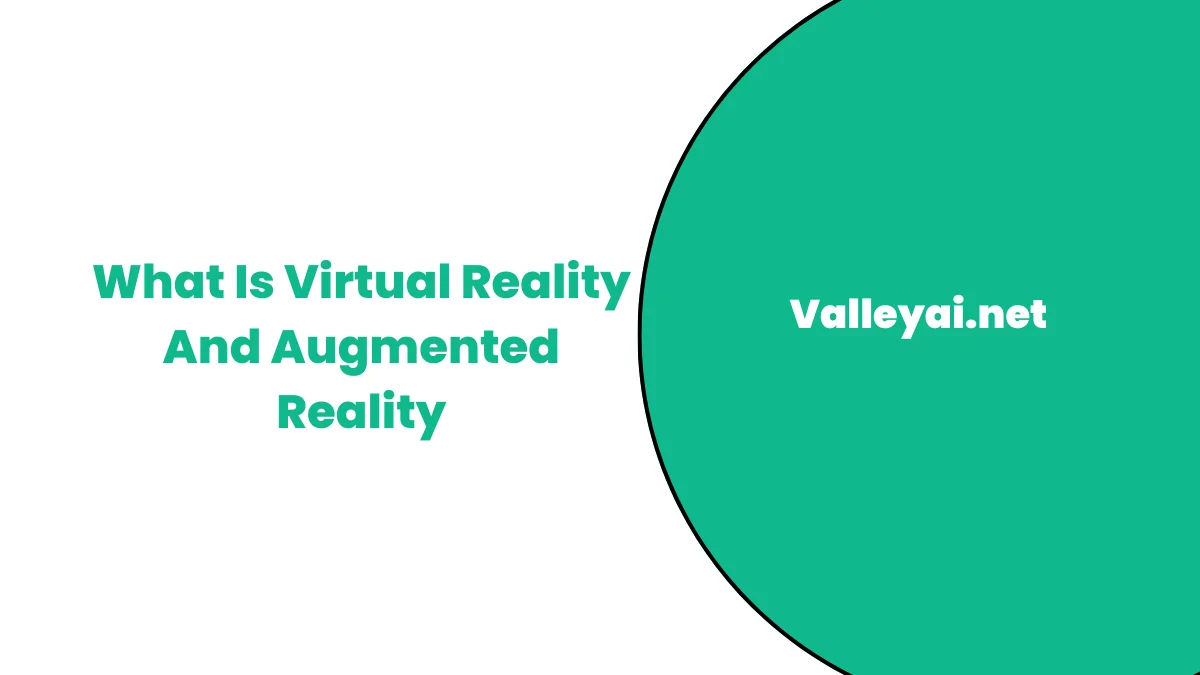We will discuss What Is Virtual Reality And Augmented Reality and how they work. Some of their application examples, benefits, and future potential.
Virtual Reality & Augmented Reality is the next big thing in the world of technology. The two worlds are so different and do such different things, but they both have one thing in common. They are the future of technology.
The matrix reports that VR and AR first became popular in the late 1990s when they were used in video games and as adjuncts to traditional console gaming. In the early 2000s, VR became a more advanced technology with the release of the Oculus Rift and the HTC Vive.
Whether you want to build a new app or make your next business venture possible, these two worlds are going to help you get there. Both technologies are used in everyday life and they are now reality technologies.
Let’s start with
What Is Virtual Reality And Augmented Reality
Virtual reality(VR) is a computer-generated simulation of a three-dimensional image or environment that can be interacted with in a seemingly physical way by a person using special equipment. Virtual reality is the next evolution of video games and it will change the way we play, work and communicate.
Augmented Reality (AR) is an interactive experience of a real-world environment where the objects that reside in the real world are “augmented” by computer-generated sensory input such as sound, video, graphics, or GPS data. Augmented Reality allows us to interact with our environment in new ways – for example seeing through walls to view what’s on the other side.
How does VR work?
Virtual reality is a technology that creates an environment where users can experience events or settings as if they are really there. You can also say that it is a simulation of an alternate world.
To do this, VR requires three things: a device to display the virtual environment, sensors to track the user’s movements, and software that interprets those movements and transforms them into a 3D representation of the virtual world.
The main component of a VR system is some kind of headset that totally obstructs the user’s field of vision.
Once these pieces are in place, you put on your VR headset and become immersed in whatever scene you’re looking at. You can explore 360 degrees of space by turning your head all around – even looking up and down!
This 360-degree video gives full access to users to move the image in any direction that they want.
What are some examples of virtual reality applications?
Some popular VR applications include video games, google cardboard, movies, and tourism experiences. For example, you can use VR to experience a 360-degree tour of a famous landmark like the Eiffel Tower or the Jamaican Blue Mountains.
Alternatively, you might want to try out one of the many gaming titles available on the market that let you explore fantastical worlds beyond your own backyard. Movies and TV shows also often make good use of VR technology – think about watching an intense action.
How does AR work?
Augmented Reality (AR) works similarly to virtual reality but incorporates additional elements such as digital images, sounds, and text that are overlaid in the real world. AR allows users to see different types of information on top of whatever they’re looking at in the physical world.
But instead of augmenting what the user sees in front of them directly, augmented reality blends digital content with real-world elements.
AR requires no hardware, just software – an app like Microsoft’s HoloLens or Snapchat’s Spectacles.
The great thing about AR is that it can be used in any situation: while you’re driving, cooking dinner, or even just reading a book. Because AR is built on layers, it can be adapted to just about any object or environment.
For example, you could see a map overlaid onto a picture of your house – letting you know exactly where all the outlets are without having to leave your seat!
What are some examples of augmented reality (AR) applications?
There are many different examples of Augmented Reality.
Examples of Augmented Reality are digital elements, Google Goggles, Snapchat lenses, and the camera on smartphones.
One is with Google Glass. It is an example of Augmented Reality. Google Glass is a wearable computer that projects the internet onto a lens.
Microsoft Kinect projects the world around you on your TV. This is also an example of Augmented Reality.
One example is Pokemon Go, which is a game that is played by looking at your phone and trying to catch Pokémon.
Another one is the game Ingress, which is a game that is played on Android and iOS and is similar to a mapping game. Another is a game that is played on Facebook.
What are the benefits of using virtual reality and augmented reality?
Virtual reality and augmented reality offer a number of benefits, including the following:
-They can be used to immerse users in different worlds or scenes.
-They can be used to provide training or educational experiences that are more immersive than traditional methods.
-They can help people with disabilities participate in activities they would otherwise be unable to do. -They can help people with mental health issues communicate more effectively.
What are the limitations of virtual reality and augmented reality?
VR and AR are both helpful in different areas but they are limited in that they cannot change the surroundings.
The limitations of virtual reality are that it is a very expensive technology and it is only available to people who have a really good computer.
The limitations of augmented reality are that it is still new and can only be used for certain purposes.
While virtual and augmented reality has many potential uses, their limitations stem from factors like cost and accessibility.
How is virtual and augmented reality being used currently?
There are a number of different ways that virtual and augmented reality are being used currently.
Virtual reality is primarily used for gaming, entertainment purposes, and medical training in healthcare.
Augmented reality is more commonly used in consumer applications such as online shopping, navigation, education/training, and advertising.
However, both technologies have the potential to be applied in many other domains including medicine (virtual surgery), manufacturing (3D printing), and architecture (walk-throughs).
What are the challenges of virtual and augmented reality?
There are a number of challenges that need to be addressed before virtual and augmented reality can become mainstream.
One challenge is that these technologies are still relatively new, so there is a lot of development work that needs to be done in order to make them more accessible and user-friendly.
Another challenge is the availability of proper hardware: at present, many VR and AR devices require high-end graphics cards or dedicated phones/tablets.
Finally, cognitive studies have shown that when people perceive their environment as being artificial (e.g., through VR), they tend to experience different emotions than when they perceive environments as being real (e.g., through AR).
These challenges need to be addressed in order for virtual and augmented reality to become more widely used.
What are the future potentials of virtual and augmented reality?
There are a number of potential future uses for virtual and augmented reality. Some possible applications include:
Virtual reality could be used in education/training to provide immersive experiences that allow users to learn new information more easily.
VR could be used in psychiatric treatment to help patients deal with anxiety and stress disorders.
AR can be used in advertising to create more immersive, interactive ads that are better targeted at consumers.
Conclusion: Start Using Virtual Reality & Augmented Reality Today!
I hope you enjoyed reading my blog post! There are many exciting new technologies that are coming to market with VR and AR today.
VR and AR are designed to provide a simulated environment to the users. Each concept is distinct and has various use cases. These technologies are used to improve the customer experience and expand the brands in the business.
I hope you learned some useful and additional information you’ll be able to take with you and build your own conclusion.
Read more about AR and VR
- Understanding the Landscape of Cloud Vulnerability Management - March 25, 2024
- Quality Assurance Strategies for Startups: Ensuring Software Reliability - March 5, 2024
- Working of NLP to Improve Copywriting in AI Paraphrasing Tool - February 28, 2024

